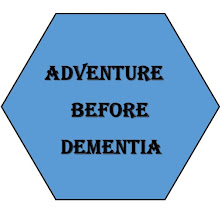We met with some kids from the Rumaki Academy, a total immersion Maori group. We were called into the meeting room, welcomed, and the class then sang a song for us. Our spokesman (Bill) thanked them and told them a little about our group, and we then sang for them. We sang "Dixie" and "Yankee Doodle," and the kids seemed to appreciate the North-South rivalry as paralleling the rivalries among Maori tribal groups, between New Zealand and Australia, between North and South Islands, etc. As we left the kids, we were treated to a Maori kiss (the Hongi) - a touching of the forehead and nose.
After a tour of the facilities (impressive), we ended up in the teachers' lounge for tea/coffee and biscuits (cookies). Alas, our visit had to end so we could hustle over to the airport to catch a plane. We are heading to Queenstown to begin our tour of New Zealand's most famous and magnificent scenery. That tour began from the air - we had beautiful views of the Southern Alps as we headed into Lord of the Rings country. The tall peak in the left center of picture is Mount Cook, New Zealand's highest point.
Our hotel is the Millbrook Resort and Spa, located just outside of Arrowtown, about 20 minutes from Queenstown. As soon as we got checked in, we left our luxurious rooms and went into Arrowtown. This fascinating little settlement literally sprang up overnight with the discovery of gold in the Arrow River in 1862. Thousands of miners from around the globe flocked to the area and the river became famous as one of the world's richest sources of alluvial gold.
We visited the impressive town museum, which had excellent displays about the history of the area, especially the gold rush era, when the town grew in size to over 7,000 people. We walked around the Chinese miners' settlement, where the small houses along the river looked like a rough place to spend the winter.
We walked along the Arrow River, admiring the beautiful blooming lupines.
We were met by a local guide who gave us the grand historical tour of the town, which now has 2,000 residents.
The early pioneers build small cottages of stone and timber, established churches and planted handsome avenues of trees, and of course businesses such as hotels, saloons, gambling houses and dance halls. Today, many of the old buildings remain and have been restored for use as business and residences. The miners' cottages are especially popular as vacation homes. We also visited the old jail and the Catholic Church, dating back to the mid-1800's.
After the tour, we went to the local pub (of course) for dinner. A nice spot overlooking the river, fireplaces going strong, and plenty to eat.









